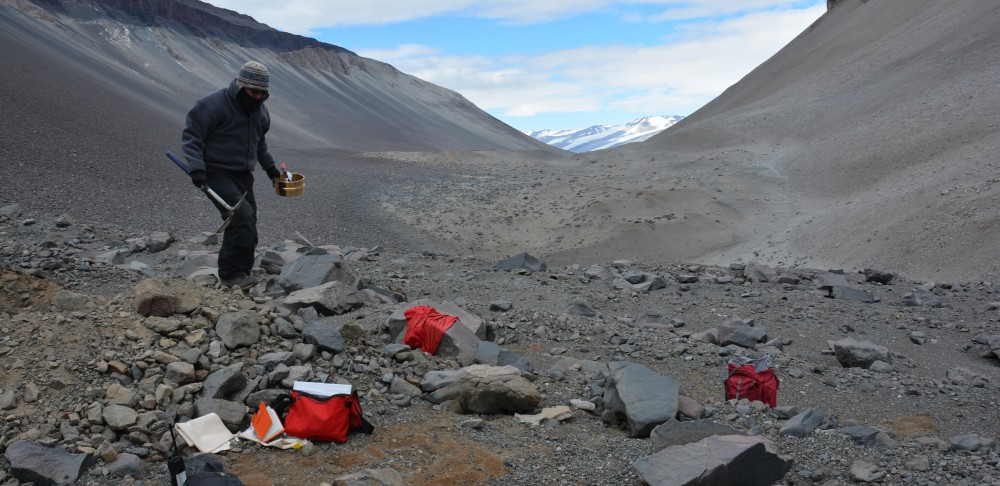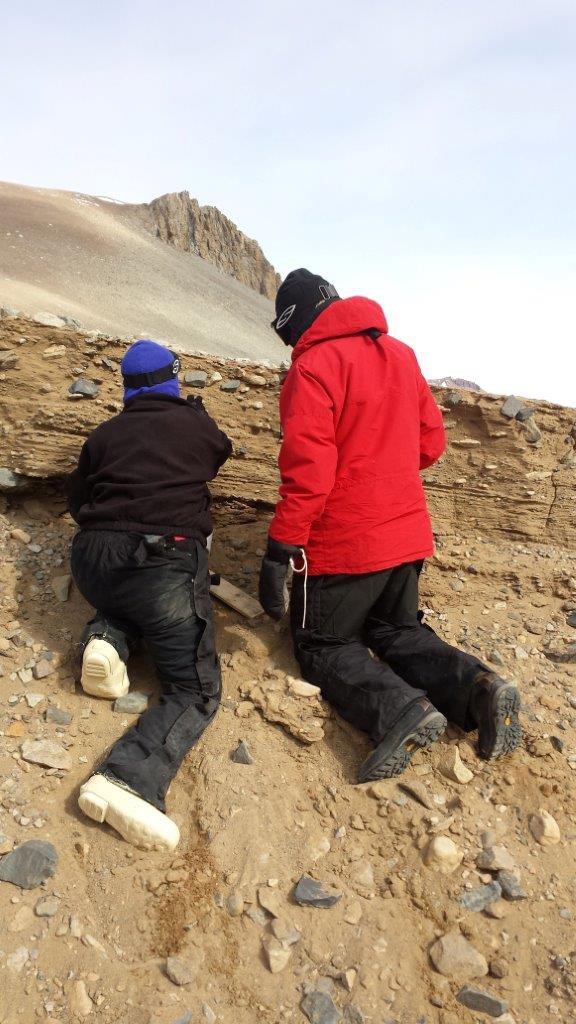First activity in South Fork = getting some samples in a big gulley cutting into a sediment fan leading into the valley. Jay and his compatriot, Garreth (sp?), have done a bunch of work here, so the two primary gullies are unofficially named…Garreth’s Gulley and Jay’s Gulley. Garreth has somehow claimed the bigger of the two, so we’re in Garreth’s Gulley. And that’s how things get named.
The questions are: when was the fan deposited? How long does it take to build up a decent-sized fan like this? To answer, we need to find out when the sediments were buried.
In some cases, sediment burial ages can be determined using a technique called Optically Stimulated Luminescence, or OSL. This basically determines how long it’s been since the sediment—usually sand—has been exposed to sunlight. Because uncovering the buried sand to the sun would reset its clock, we have to get at sand that hasn’t been exposed in the gulley walls. This means hammering a PVC tube into the cliff and retrieving the deeper material.
Success! We got a nice profile of samples into the cliff, and Jay even had a chance to do some precision photography of the eroding gulley wall.


